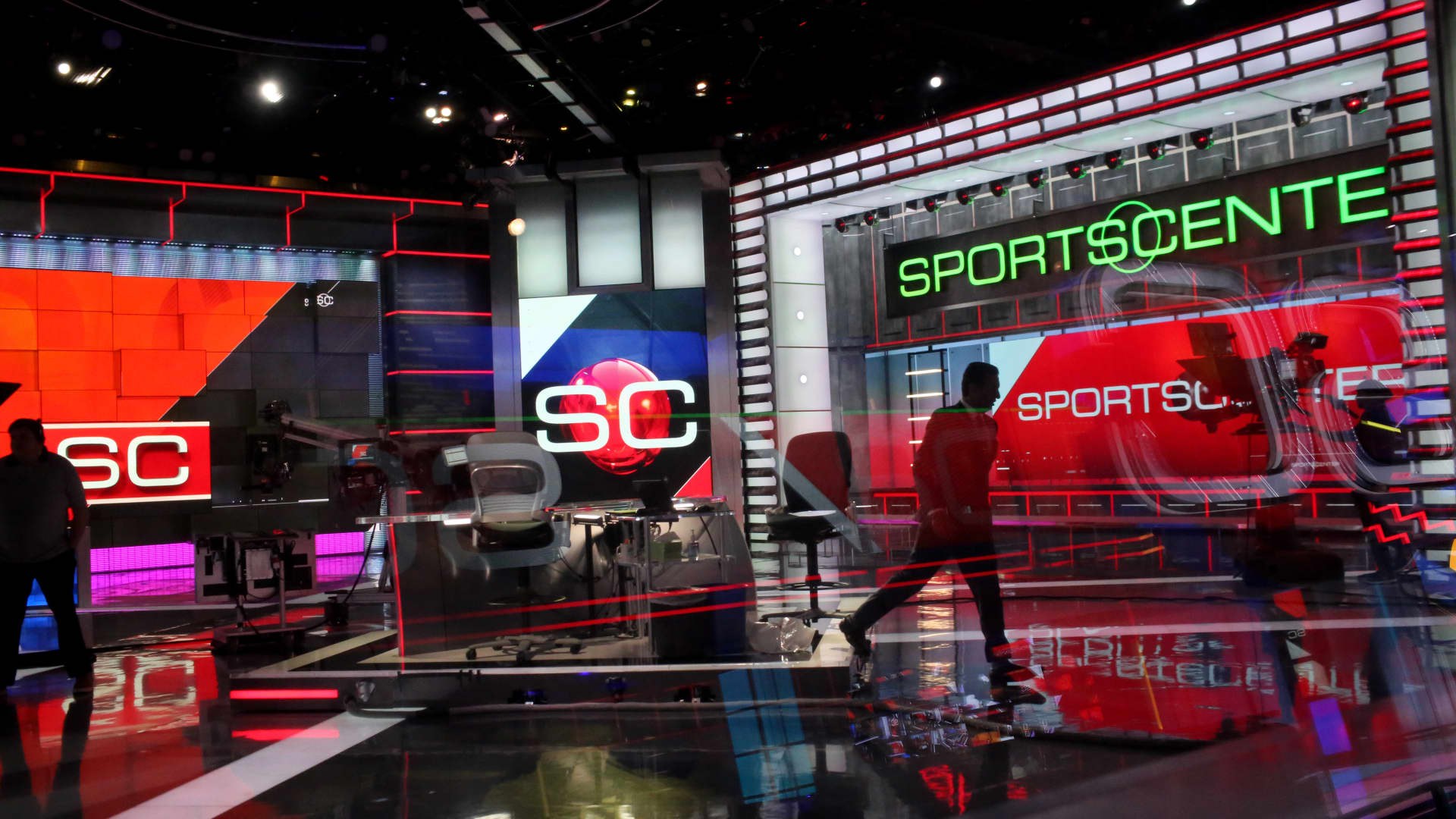Cable giant Charter Communications and Disney are in a battle over contract fees that has left millions of people without access to U.S. Open, college football and potentially “Monday Night Football,” with the NFL’s season starting in just days.
On Thursday, Disney said that the two companies have been in ongoing negotiations but yet to agree to a new deal. That resulted in Charter’s customers losing access to its networks, including broadcaster ABC and pay-TV channels such as ESPN and FX. Charter and Disney’s stocks were each down more than 2% on Friday.
Charter’s Spectrum TV service has roughly 14.7 million customers across 41 states, with some of its top TV markets being New York, Los Angeles, Dallas-Fort Worth and Atlanta.
These sorts of battles, which can lead to so-called blackouts for pay-TV customers, are common in the industry. But, in the age of streaming, this one is different.
“This is not a typical carriage dispute,” Charter CEO Chris Winfrey said Friday on a call with investors.
Early Friday, Charter executives called the pay-TV ecosystem “broken.” They said they pushed for a revamped deal with Disney that would see Charter cable customers receive access to Disney’s ad-supported streaming services like Disney+ and ESPN+ at no additional cost.
This seemed to be the sticking point as Charter said it accepted Disney’s request for higher fees, although Charter executives didn’t provide specifics on the negotiations as they remain hopeful to get a deal done.
Disney shot back in a statement Friday that Charter refused to enter into a deal after it offered favorable terms and proposed “creative ways” to make Disney streaming services available to Spectrum customers, including “opportunities for new and flexible packages where those services become a focal point.” The company didn’t elaborate on specifics.
ESPN is said to reap high fees. ESPN receives $9.42 per subscriber a month, while other Disney networks like ESPN2, FX and Disney Channel gets $1.21, $0.93 and $1.25, respectively, according to data from S&P Global Market Intelligence. A Disney representative didn’t immediately comment on the fees. The media giant has more than 20 networks.
Winfrey noted that in the last five years the entire pay-TV ecosystem has lost nearly 25 million customers, or almost 25% of total industry customers. “It’s staggering,” he said.
Between the high cost of the traditional bundle and the option to switch to more affordable streaming options – most of which are provided by the same companies behind the networks on pay-TV – the speed at which cord-cutting is only accelerating.
Disney’s traditional TV channels and streaming services “are not one and the same, per Charter’s assertions, but rather complementary products,” the company said Friday, adding it has exclusive content on each platform, and Charter is “demanding these services for free” without anything in exchange.
Disney said in its Friday statement that Charter rejected their offer to extend the contract amid the U.S. Open, and called it a disservice to customers also ahead of college football season on ABC and ESPN.
In response, a Charter spokesperson said Friday, “Disney knows this is not the case. But we’ll leave it at that so we can get back to more productive conversations for the benefit of our mutual customers.”
Live sports, particularly those shown on ESPN, have long been considered the glue holding the pay-TV bundle together, especially as customers flee for streaming services.
The two companies renewed their contract in 2019, which also included Charter integrating Disney+ and ESPN+, as well as Hulu, into its set-top boxes to give customers more seamless access to those apps, CNBC previously reported.
Charter, which also provides broadband and mobile services but is not in the content business, has said it values its pay-TV business and wants to see it thrive, even if it takes on a different form than the past.
The company took a step toward that earlier this summer when it announced it will offer a sports-lite package – without regional sports networks, but would still include ESPN – to customers at a cheaper rate.
Winfrey said on Friday that was not an option it presented to Disney, although he “would love that,” but believed it was “a stretch too far” for Disney.
Instead, Winfrey said the company sees the option it presented to Disney as a “glidepath” forward to a new business model that keeps the cost of the traditional bundle down for customers who still want it, and puts more eyeballs on Disney’s ad-supported streaming services.
Disney CEO Bob Iger recently said on CNBC that assessing its traditional TV business is at the top of his list, and opened the door to potentially unloading these assets in a sale. The CEO, who returned to the helm late last year, said he realized the company is facing a lot of challenges, many of which are “self-inflicted.”
Iger did note that ESPN is in a different bucket and Disney was instead open to selling a stake in the network while also moving toward a direct-to-consumer streaming service of its live feed.
Still, ESPN Chairman Jimmy Pitaro said at a CNBC event this summer that while this is the future for ESPN, it wouldn’t be in a way that would leave pay-TV distributors behind and nix the traditional pay-TV model that has supported the business for so long.
“The [traditional TV] model has been very good to Disney,” Pitaro said at CNBC x Boardroom’s inaugural Game Plan sports business summit.
Despite the public feud, Disney said in a statement on Friday it was “ready to get back to the negotiation table to restore access to our unrivaled content to their customers as quickly as possible.”
